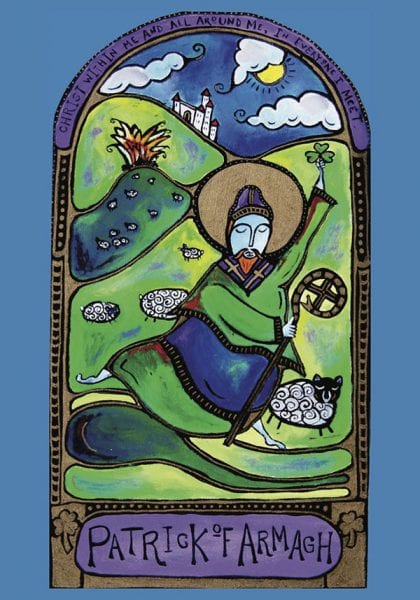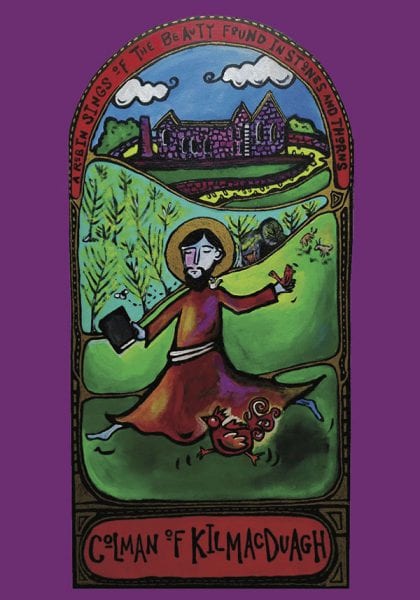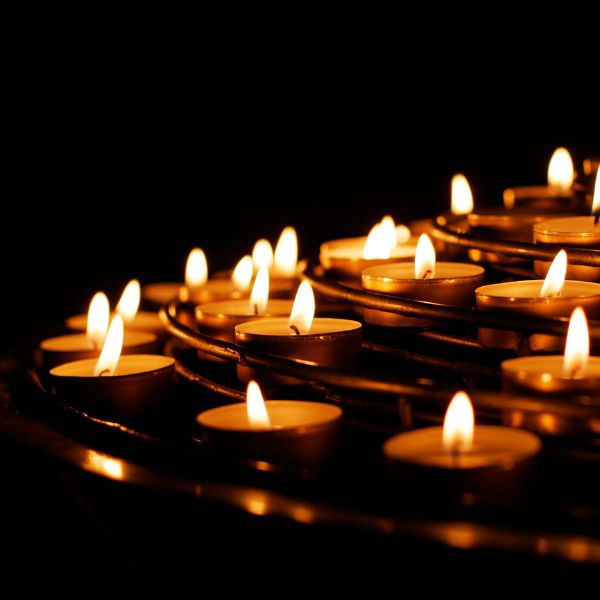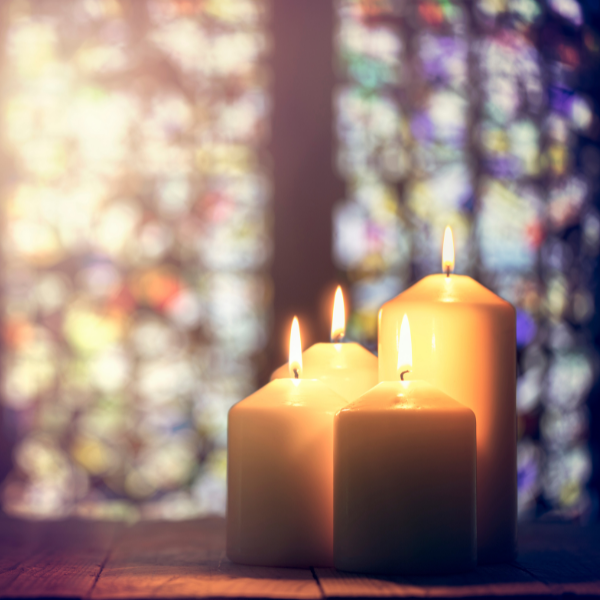 This week’s interview is with artist Tim Mooney. I first met Tim five years ago when he audited a class I co-taught through the San Francisco Theological Seminary on “Freeing the Imagination: Creativity as Christian Spiritual Practice.” The course was funded by the Practicing Our Faith project and was an exciting opportunity to journey with twelve graduate students and ministers, exploring together the possibilities that creative practice holds for Christian communities. Tim brought rich reflection from his own experience as an artist, spiritual director, and pastor within the Presbyterian tradition. Since that time he has developed himself as an artist to the point where now it is his full-time work and ministry.
This week’s interview is with artist Tim Mooney. I first met Tim five years ago when he audited a class I co-taught through the San Francisco Theological Seminary on “Freeing the Imagination: Creativity as Christian Spiritual Practice.” The course was funded by the Practicing Our Faith project and was an exciting opportunity to journey with twelve graduate students and ministers, exploring together the possibilities that creative practice holds for Christian communities. Tim brought rich reflection from his own experience as an artist, spiritual director, and pastor within the Presbyterian tradition. Since that time he has developed himself as an artist to the point where now it is his full-time work and ministry.

Are you rooted in a particular faith tradition?
I was raised in a family and went to a liberal arts colleged steeped in the Wesleyan Armenian tradition, which puts emphasis on the human response to God. After seminary I was ordained in the PCUSA and continue as a pastor in the reformed tradition. However, much of my spiritual direction training has a very broad Christian influence.
 What is your primary art medium?
What is your primary art medium?
My primary medium is acrylic paint on canvas. I love abstract, landscape, and figurative work.
How do you experience the connection between spirituality and creativity?
Creativity seems to be the place or the process in which I connect spiritually the most. When I’m creative, attending to the canvas, I’m very much in the moment. I’m not distracted by the future or the past, and I’m giving a great deal of attention to what I’m thinking, feeling, intuiting and seeing. I’m also very aware that I’m in a relationship, acting upon the canvas and then listening to what it is saying to me, what it needs, what will bring it to some sense of wholeness or completeness. It’s very much like prayer, a dialogue with God, a give and take, a co-creation.
 What role does spiritual practice have in your art-making?
What role does spiritual practice have in your art-making?
My most regular spiritual practice is journaling. It allows me to throw what’s in me out onto the page and let me sort through it contemplatively, and it’s a way of priming the pump of feeling, intuition, concept, and the creative juices begin to flow. When I’m working on overtly liturgical or sacred art, lectio divina is my primary way of letting scripture and tradition suggest images for the work. But in a real sense, painting itself for me is a spiritual practice. It has a physical component that is active, but the experience is similar to meditation for me.
What sparked your spiritual and artistic journeys?
Because of my family’s faith, I found that I was already on a spiritual journey. Slowly, and with some major bumps in the road, I made that journey my own, and it continues to unfold in surprising ways. It seems that majoring in religion, attending seminary, being ordained, and becoming a spiritual director, were all part of the journey that has sparked my becoming a full-time artist. As a child I loved drawing, but my older sister was the “artist” in the family, and so I gave my attention to athletic, intellectual, and social endeavors, all the while continuing to dabble in creative expression. But as I continued to pay attention to my spiritual journey, it kept pointing to the creative yearnings. Looking back, I now see that a creative life is my deepest calling.

Do you have a particular process you use when entering into your creative work?
What works best for me, as an artist, is to simply begin my work on a painting. I don’t have a period of quiet or reflection first, or wait for inspiration. I begin by pulling out paints and brushes, mixing colors, and diving into the work in front of me. That seems to prime the pump and then I’m off and running. At other times I find that I need to look at a painting, often for a very long time, particularly when it is in its middle and usually “ugly” stage. This is a listening period, a gestation, that helps me know what needs to be done next.
How does your art-making shape your image of God?
Being an artist and giving myself to the creative process has helped me see that God cares very little about perfection in any given moment; instead it is more about engagement in the moment, and a willingness to continue to hear and respond to Spirit’s nudges. When I first began to paint in a very public studio/workspace, I feared that others would judge me a horrible artist when they would see my paintings in their beginning and middle stages. But I soon learned, and gratefully so, that just as my creative expressions had to go through awkward and even ugly stages, so too did my life and everyone else’s. I experienced a profound sense of freedom knowing that God knows this too, for all of us. Since I often don’t know what will come out of me when I go to paint, particularly my abstracts, and am often surprised at what emerges, I realize that God is also mystery with a great deal of freedom to surprise us if we’re willing.

I am so grateful to Tim for taking the time to share his insights. The insight that is especially resonating with me today is the idea of art-making as being an act of relationship to the canvas, or whatever medium you are working with: “I’m also very aware that I’m in a relationship, acting upon the canvas and then listening to what it is saying to me, what it needs, what will bring it to some sense of wholeness or completeness. It’s very much like prayer, a dialogue with God, a give and take, a co-creation.” This is often my experience when creating, a flow rises in which I am aware of the ongoing conversation I have with the artwork, what it asks for from me, how Spirit is moving in me in the process.
In addition, while I love all of these artworks of his, I am especially moved by the bottom one, titled “Theotikos” which we know from the previous interview with Heather Williams Durka means “God-Bearer” or one who gives birth to God. I am also struck by this in connection with last week’s interview with Miska, the variety of ways artists engage sacred images in relationship to their stream of tradition.
Make sure to visit Tim’s website at www.TimMooneyStudio.com for more examples of his powerful work.
(Artwork from top to bottom: “After the Harvest”, “Meditation”, “Silent Cry”, “Pulse”, and “Theotikos”)
-Christine Valters Paintner @ Abbey of the Arts






11 Responses
Christine,
Thank you for an inspiring interview with an individual whose creativity in interpreting faith knows no bounds. I have been blessed to know Tim since before he expressed his faith on canvas and instead shared it (equally as well I might add) in the form of prose and music. Tim indicated that he intitially felt that the artisitic “calling” wasn’t necessarily his until he opened himself up fully to the possibilities and allowed his faith to direct him rather than he directing his faith….that is a very powerful message for all of us.